for the ones that love history, that cant get enough of learning about new people that might not always apear in books. for the ones that love tid bits. focusing on interwar europe and US.
Don't wanna be here? Send us removal request.
Photo


Errol Flynn in Adventures of Captain Fabian (1951)
31 notes
·
View notes
Photo








Stephen James Napier Tennant (better known as Stephen Tennant) was a British aristocrat and socialite, known for his eccentric lifestyle. He was one of the leading lights of the 1920’s and 1930’s Bright Young People. For most of his life, Tennant tried to start or finish a novel ‘Lascar: A Story You Must Forget’.
In 1910, when Stephen Tennant was 4 years old, he ran through the gardens of his family’s Wiltshire estate, and was literally stopped in his tracks when he came face to face with the beauty of the “blossom of a pansy.“ Thirty years later, so precious and high-strung that he sometimes took to his bed for months at a time, he was coaxed outside by a friend for a ride in the car on the condition that his eyes be bandaged, since passing scenery might make him too “giddy." According to Philip Hoare, the author of “Serious Pleasures,” the witty, quirky and astounding life story of this unique character, Cecil Beaton was one of the first to encourage Tennant’s eccentric vocation of doing nothing in life but doing it with great originality and flamboyance. Stephen Tennant couldn’t care less what people thought of his eccentricity and his Charles James leopard print pyjamas, his make-up or his dyed hair dusted with gold.
Despite privilege and an outward show of frivolity, the life of Stephen Tennant was hardly a glorious cycle of song, so marked was it by illness (physical in the first half, mental in the second). He grew up devoted to his mother but even more so to his nanny. Despite his delicate health (tuberculosis), he had the means and encouragement to develop his talents for drawing and writing, alongside his boundless curiosity and effeminate persona. By the time he was 21 he had published a book of his poetry, exhibited his drawings in London and became associated with the socialite group the Bright Young Things, that included the likes of Cecil Beaton and Rex Whistler. Despite this love, which came to him in the unlikely form of the significantly older war poet Siegfried Sassoon, went wrong, then simply went and never returned. But on the other hand his friends would have agreed that his conversation, an art form at which he excelled, was indeed a medley of extemporaneousness. What’s more Tennant was, for one night at least, at a London fancy-dress party in 1927 which marked the apex of the Bright Young People, Marie of Roumania.
It is popularly believed that he spent the last 17 years of his life in bed at his family manor in Wilsford, Wiltshire, which he had redecorated. Though undoubtedly idle, he was not truly lethargic: he made several visits to the United States and Italy, and invited many of the world’s most famous people to his home and bedside, despite his reputation as a recluse. This became increasingly true only towards the last years of his life. Yet even then, his life was not uneventful: he became landlord to VS Naipaul who immortalised Tennant in his novel The Enigma of Arrival.
During the 1920’s and 1930’s, Tennant had a tumultuous love affair with the renowned poet Siegfried Sassoon. Prior to this he had proposed to a friend, Elizabeth Lowndes, but had been rejected. Sassoon was said, to have been the love of his life. it lasted some four years before Tennant off-handedly put an abrupt end to it. Sassoon was reportedly depressed afterwards for three months, until Sassoon married in 1933 and became a father in 1936. After World War II, Tennant became, in the words of Osbert Sitwell, “the last professional beauty.“ From then on, it was time to hit the sack big time. Sleeping Beauty forever. He had inspired numerous works of fiction (Sebastian Flyte in Evelyn Waugh’s “Brideshead Revisited,” Cedric Hampton in Nancy Mitford’s “Love in a Cold Climate", which he became immortalised in), modelled for the likes of Cecil Beaton, met enough celebrities (everyone from Tallulah and Garbo to Cocteau and Genet) and travelled the globe with Barbara Hutton and other rich dames for long enough; it was society’s turn to come visit him.
“Reeking of perfume,” “covered with foundation,“ with ribbons hanging from his dyed comb-over hairdo, he rested “non-stop” for the next 17 years in “decorative reclusion.“ Unconcerned about his grossly overweight figure ( ‘But I’m beautiful,’ he would reason, ‘and the more of me there is the better I like it!’ ), he lay in bed surrounded by his jewellery, drawings and Elvis postcards while, as Mr. Hoare puts it, his “decorative fantasies were running amok” yet he couldn’t care less what people thought, appearing as absurd and whimsical to other people, only amused himself even more. In his later years, as the antiques dealers circled outside his estate like vultures, waiting for the end, Tennant would sometimes stop traffic in nearby country towns by going shopping wearing tight pink shorts or a tablecloth as a skirt. V. S. Naipaul may have described Tennant best when he noticed “the shyness that wasn’t so much a wish not to be seen as a wish to be applauded on sight.“
When Tennant died in 1987, he had far outlived most of his contemporaries. By which time, Stephen had succeeded in making his life as whimsical, tragic, flamboyant and glamorous as the stage or silent cinema, whilst his bed became his stage that audiences came to see, a living work of art. Thereby he became the epitome of decadence, originality, and a life lesson and an inspiration to all, in being yourself and not giving a damn what others might think of it.
205 notes
·
View notes
Photo

Siegfried Sassoon on Stephen Tennant (from his letter to Max Beerbohm dated 21 February 1932)
17 notes
·
View notes
Photo


Stephen Tennant and Siegfried Sassoon from Siegfried Sassoon’s notebooks
109 notes
·
View notes
Photo



Errol Flynn with his last Love Beverly Aadland ♡
27 notes
·
View notes
Photo
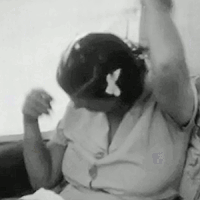

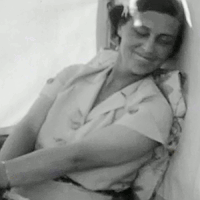

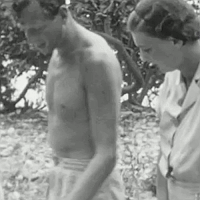


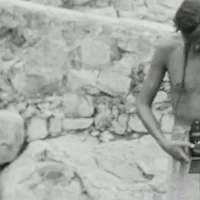
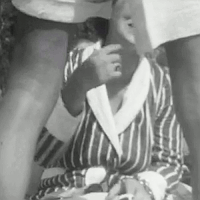
The Duke and Duchess of Kent holidaying on the Dalmatian Coast with friends in August 1936
from Mountbatten home movies
95 notes
·
View notes
Photo

David Prince of Wales in WW1 http://flic.kr/p/5Kh47D
5 notes
·
View notes
Photo

Prince Edward’s Royal Tour, 1920 https://flic.kr/p/wMs2N
10 notes
·
View notes

